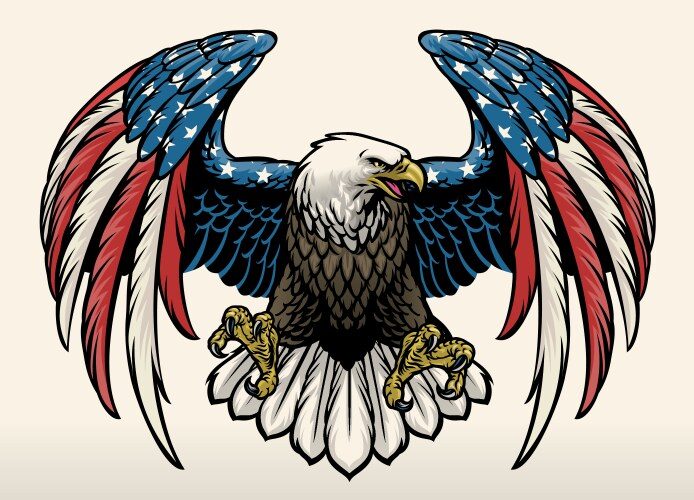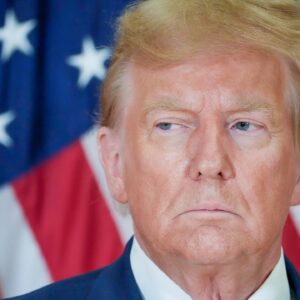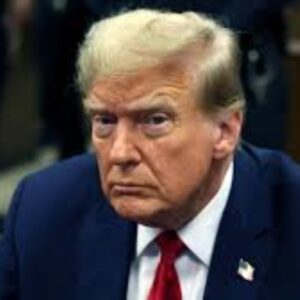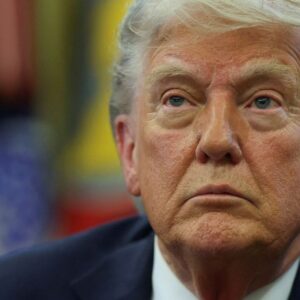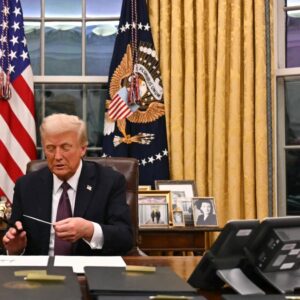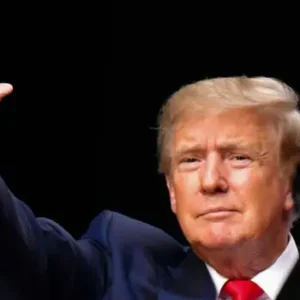President Donald Trump has imposed a staggering 245% tariff on Chinese imports, vowing to defend American industry and undercut China’s retaliatory tactics. The move, one of the largest tariff increases in U.S. history, comes as Trump reasserts his commitment to economic nationalism and fair trade.
“The United States is taking in RECORD NUMBERS in Tariffs,” Trump declared on Truth Social Tuesday evening. “The cost of almost all products is going down, including gasoline, groceries, and just about everything else. Likewise, INFLATION is down. Promises Made, Promises Kept!”
The sweeping tariff hike follows a sharp downturn in Chinese export activity, particularly at key ports. According to China’s Ministry of Transport, total port cargo volume dropped 9.7% during the week of April 7-13 compared to the previous week.
Container throughput slid 6.1%, reversing gains made the week before Trump’s announcement. Chinese officials have responded cautiously.
While Beijing has condemned the tariffs, Chinese trade envoys hinted at a willingness to resume talks—but only if Trump demonstrates mutual respect. The message suggests China may seek a diplomatic offramp if the current economic pain continues.
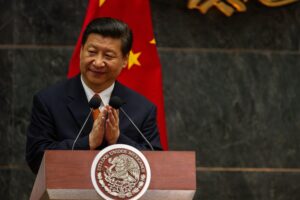
Mexico City, Mexico June 6 2013. Xi Jinping, president of the People’s Republic of China during a state visit in Mexico City.
According to the Wall Street Journal, shipping activity to the United States has plunged. The Ningbo Container Freight Index showed freight rates to the U.S. West Coast dropped 18%, with rates to the East Coast down 10.8%. These figures confirm that the tariffs are already affecting shipping lanes, pushing China to divert exports elsewhere.

Freight to Europe, by contrast, ticked up slightly—1.8% overall—with significant gains on routes to the western and eastern Mediterranean. South American routes saw the most dramatic shift, with costs soaring 52.5%, suggesting Chinese exporters are scrambling to find alternative buyers.
Meanwhile, the economic fallout is beginning to reverberate inside China. Investment bank UBS downgraded its forecast for Chinese economic growth to 3.4%—down from a previously projected 4%—citing the impact of U.S. tariffs and Beijing’s need for further stimulus.
UBS analysts believe China’s exports to the U.S. could shrink by two-thirds in the coming quarters. Overall outbound shipments are expected to fall 10% in dollar terms this year.
Despite warnings from some economists that the tariffs could fuel global inflation or hurt American consumers, Trump allies have praised the move as overdue.
The 245% tariff applies broadly, but with lower effective rates on certain electronics and medical equipment. Industries such as steel, textiles, and automotive parts are expected to be hit hardest. However, some insiders argue that the ripple effects will ultimately strengthen domestic production by forcing manufacturers to bring supply chains home.
Trump’s strategy seems to be working—at least in the short term. Inflation has cooled slightly, according to the latest Bureau of Labor Statistics report, and gasoline prices have edged down in key swing states. Whether this momentum holds may depend on how Beijing responds next—and whether it’s willing to blink first.
For now, Trump is signaling that he’s in no mood to back down.
